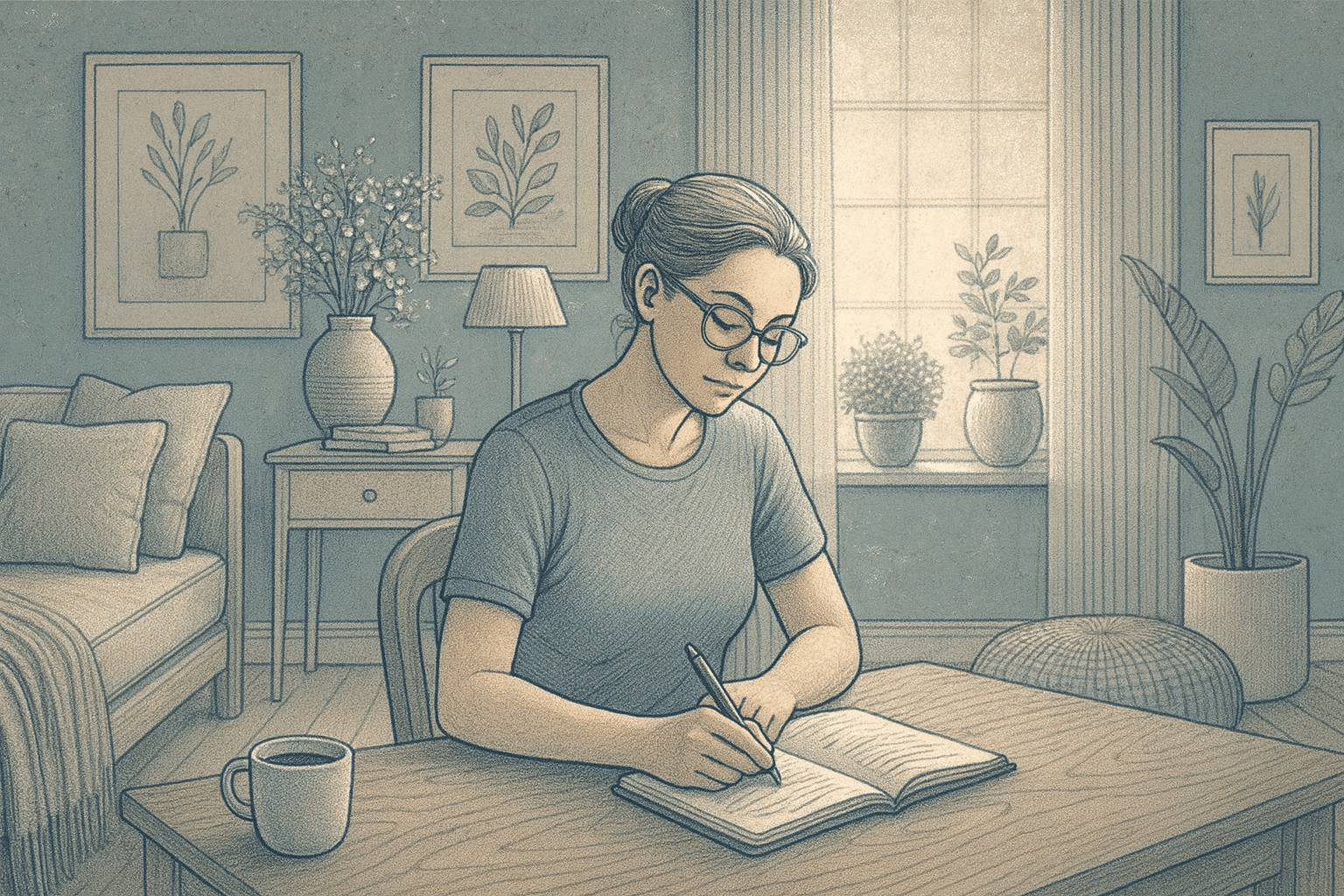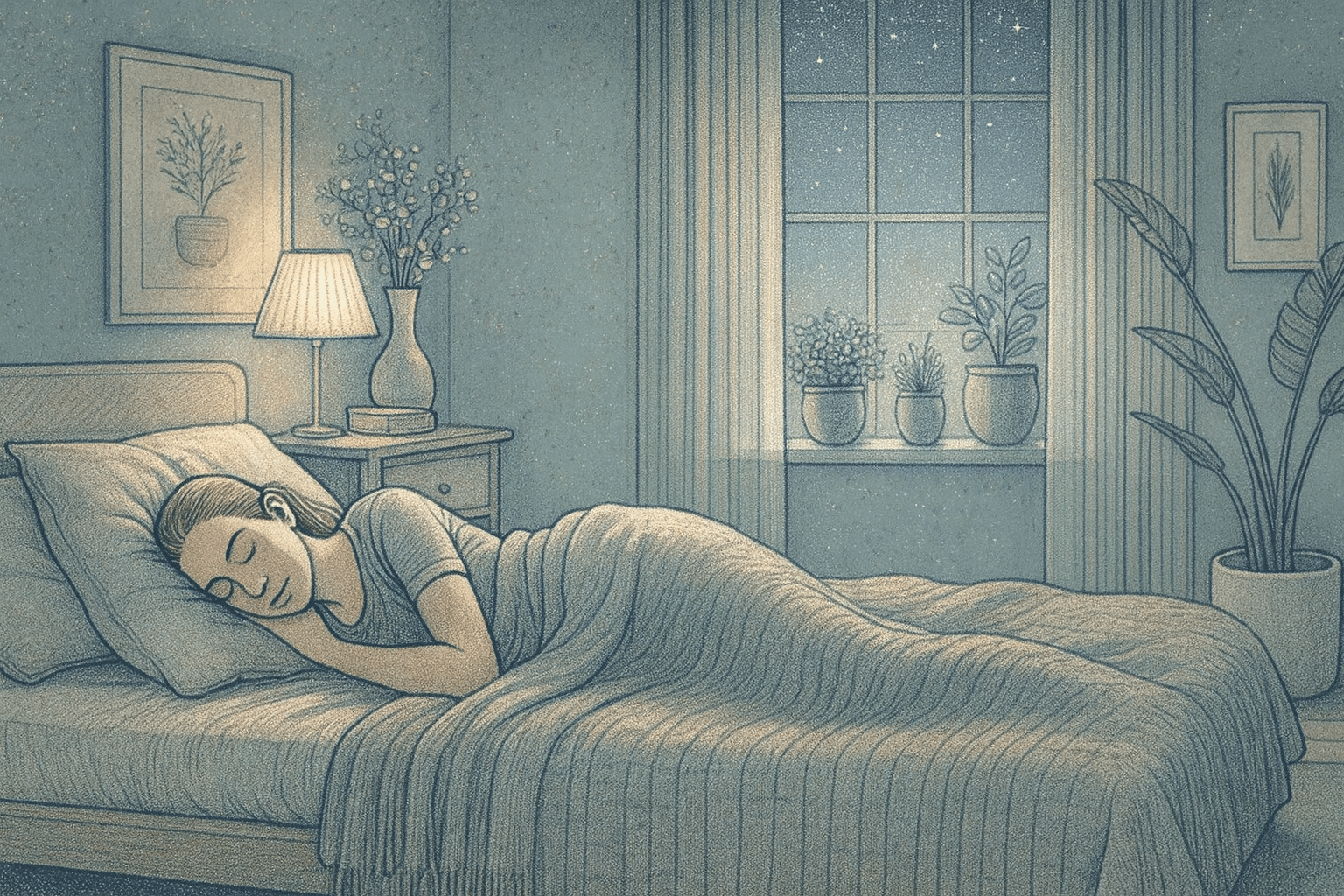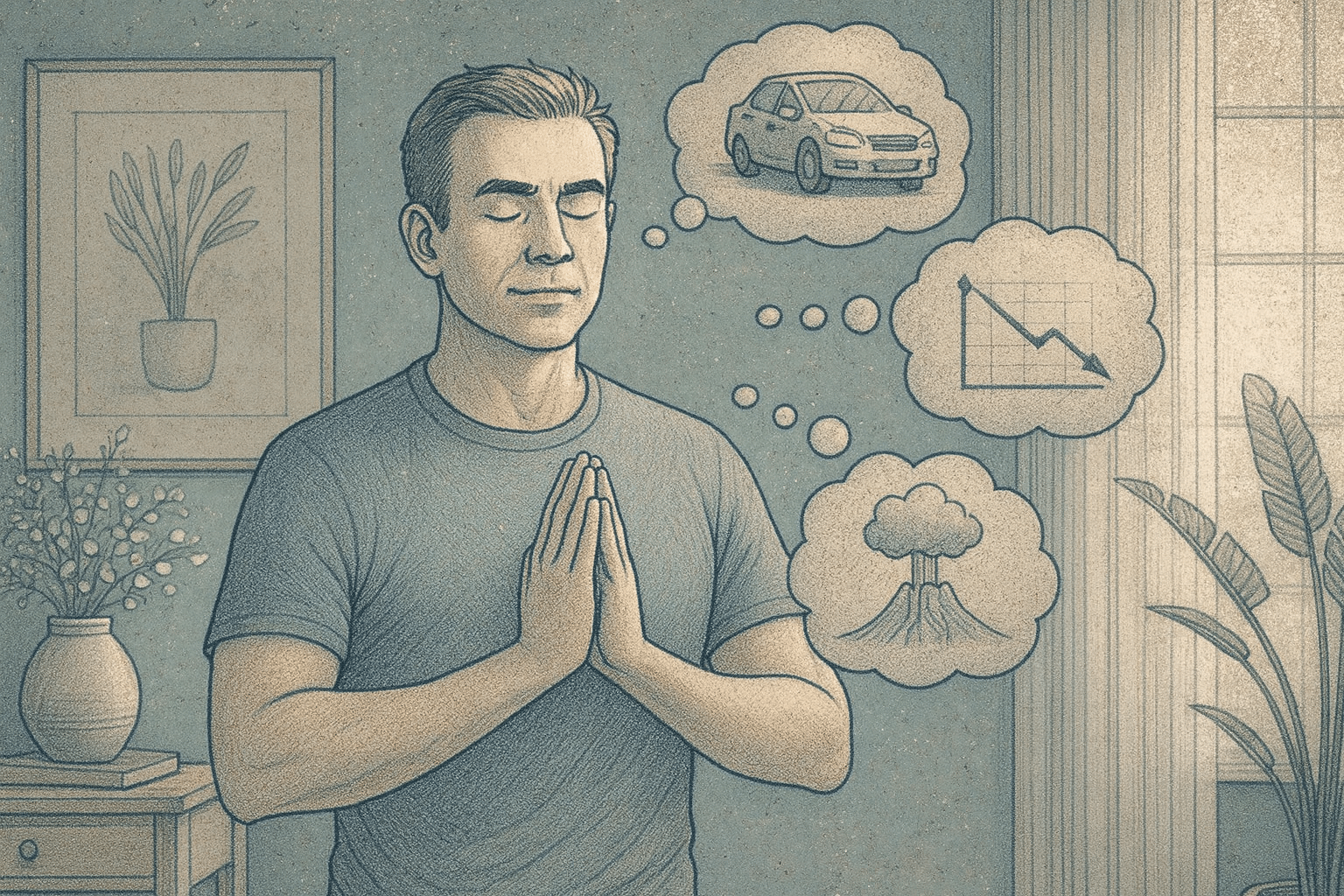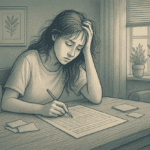
Key Takeaways
- Journaling is a research-backed method that can reduce anxiety symptoms by helping you externalize and process worried thoughts
- The “Worry Dump” technique before bed can improve sleep quality by transferring anxious thoughts from your mind to paper
- Thought reframing through journaling helps break the cycle of catastrophic thinking by challenging anxiety-driven assumptions
- Consistent journaling practice creates a personalized anxiety management toolkit you can access whenever stress levels rise
- Professional support, paired with personal habits like journaling, can speed your progress. Mission Connection provides CBT, DBT, mindfulness, psychiatric care, and flexible in-person or telehealth programs to help adults and young adults manage anxiety and build lasting coping skills.
Why Journaling Cuts Anxiety
Putting thoughts on paper mixes the brain’s emotional and analytical systems, which calms the nervous system and creates mental clarity. Neuroimaging shows expressive writing lowers amygdala reactivity (less fear) and boosts prefrontal activity (more thinking-before-reacting), shifting you from panic to problem-solving.
Regular journaling also improves sleep, reduces tension and stomach symptoms, helps you spot hidden triggers, and creates a visible record of progress that reinforces confidence in managing anxiety.
Mission Connection offers flexible outpatient care for adults needing more than weekly therapy. Our in-person and telehealth programs include individual, group, and experiential therapy, along with psychiatric care and medication management.
We treat anxiety, depression, trauma, and bipolar disorder using evidence-based approaches like CBT, DBT, mindfulness, and trauma-focused therapies. Designed to fit into daily life, our services provide consistent support without requiring residential care.
Top 4 Journaling Ideas for Anxiety
1. Worry Dump: Empty Your Mind Before Bed
A pre-bedtime worry dump is a simple yet powerful way to separate your daily stress from your sleep. When anxious thoughts keep circling in your head, your brain treats them as active threats, keeping you alert instead of relaxed. Writing them down gives those thoughts a new home, freeing your mind to rest.
How to Do a Proper Worry Dump
Spend 10–15 minutes before bed jotting down everything on your mind, from big problems to small annoyances. Write quickly and without judgment; this isn’t the time to organize or solve. When you’re done, close your journal and remind yourself: “I’ve captured these worries, and I can revisit them tomorrow if needed.” This tells your mind you’ve acknowledged the issues, allowing you to set them aside and often improving sleep within a week.
Example Prompt
Start with: “My biggest worries right now are…” and keep writing until you feel lighter. Skip grammar, spelling, and structure; this is purely for you. If you feel stuck, try: “Right now I’m feeling worried about…” and list anything that comes to mind, no matter how small.
Why This Works
The practice uses cognitive offloading, transferring your concerns to paper to ease your mental load. Studies show it reduces amygdala activity (linked to anxiety) and lowers cortisol, both of which help your body prepare for sleep. Many find they fall asleep much faster after just a week of doing it.

2. Thought Reframing: Challenge Your Anxious Thoughts
Anxiety often feeds on distorted thinking that makes situations feel worse than they are. Thought reframing helps you spot these patterns, question them, and replace them with more balanced perspectives. It’s especially helpful for overthinking and can, with practice, reshape how you respond to stress.
How to Reframe
Write down the anxious thought as it is. Identify the distortion, question the evidence, and then rewrite it in a way that’s realistic and proportional. This isn’t about sugarcoating; it’s about restoring balance.
Example Prompt
“I’m anxious about… but a more realistic view is…” For example: “I’m anxious about this presentation because I might forget everything, but a more realistic view is I’ve prepared well and mistakes are normal.”
Why This Works
It validates your feelings while training your mind to consider other possibilities. With regular practice, you’ll catch catastrophic thoughts before they spiral.
3. Future Letter: Write to Your Anxiety-Free Self
When anxiety feels overwhelming, it’s hard to picture life without it. The future letter helps you connect with a version of yourself who has learned to manage anxiety, creating hope and a clear vision of what’s possible. Unlike exercises that focus on the present, this one builds your identity as someone who has grown beyond their current struggles.
Creating Your Future Vision
Picture yourself 6–12 months from now, handling triggers with calm and confidence. This future self still feels anxiety at times but responds with healthier coping strategies. The more realistic and detailed you make this version, the more powerful the effect.
Example Prompt
Start with: “Dear Future Me, I’m proud we’ve overcome…” Then describe your current challenges and how your future self has addressed them. You can even ask what helped most and what advice they’d give you now.
How This Creates Hope When You Feel Stuck
Imagining a stronger future self activates the brain’s pathways for change, helping you rehearse new patterns before they become reality. Revisiting your letter during anxious moments reminds you that this phase is temporary and growth is possible. Over time, each new letter becomes proof of your progress.

4. Gratitude Reset: Shift Your Focus Away From Fear
Anxiety locks your attention on threats, making the world feel more dangerous than it is. Gratitude journaling helps rebalance this by shifting your focus to the positive without ignoring real concerns. It’s about retraining your mind to see a fuller, more accurate picture.
The 3-2-1 Gratitude Method
Each day, note three small things you appreciate, two people who impacted you positively, and one personal quality or action you feel good about. This structure makes gratitude feel tangible and specific, cutting through anxious thinking and grounding you in real, present moments.
Example Prompt
“Three small wins today were…” could be as simple as speaking up in a meeting despite nerves, using a breathing technique when panic started, or resisting the urge to seek reassurance. The key is detail; specific examples strengthen your brain’s resilience pathways far more than vague statements.
Why This Works
Gratitude journaling can boost dopamine and serotonin—the same feel-good chemicals many anxiety medications target. While it’s no replacement for treatment when needed, 21 days of consistent practice can noticeably reduce stress and help your brain naturally gravitate toward positive moments, breaking anxiety’s grip.
Finding Calm & Support With Mission Connection

Journaling is a great way to make sense of anxiety, but finding lasting peace often takes more than writing things down. That’s where we come in. Our team at Mission Connection Healthcare supports adults and young adults working through anxiety, depression, trauma, bipolar disorder, and similar challenges. We provide the tools, strategies, and care needed to help you feel grounded and empowered.
Our services are built to meet you where you are. In-person, online, or a bit of both; we provide therapy options that easily fit into your routine. With a mix of proven approaches like CBT, DBT, mindfulness practices, and educational support, we tailor each care plan to your unique needs and goals.
Getting started is simple. One of our specialists will guide you through any questions and check your insurance coverage. You’ll take a short online assessment, pick a schedule that fits, and begin care with support from licensed professionals who are here to walk with you every step.
Our mission is to bring together deep experience, thoughtful care, and innovation to make mental health support accessible when and where you need it. We serve clients across California, Virginia, and Washington, with virtual options that reach into several other states.
If journaling has helped you take that first step, we’re here to help you continue; backed by a caring team ready to support your growth, your peace of mind, and your healing journey.
Call Today 866-833-1822.
Frequently Asked Questions (FAQ)
How long should I journal each day to reduce anxiety?
Quality matters more than quantity with anxiety journaling. Research shows that consistent brief sessions of 5–15 minutes daily produce better results than occasional longer sessions. Focus on making journaling sustainable rather than time-consuming—even three minutes of focused writing can interrupt an anxiety spiral and shift your perspective.
Can journaling make my anxiety worse?
It can; if you fall into rumination journaling, where you circle problems without seeking clarity. If that happens, use prompts that steer you toward insight and solutions. These techniques are built to break anxiety patterns, not reinforce them.
Should I share my anxiety journal with my therapist?
Sharing key points from your journal can help your therapist understand your patterns between sessions. You don’t have to hand over full entries, just highlight observations or themes. If you prefer privacy, keep a “therapy notes” section for insights you want to discuss next time.
What’s better for anxiety: digital or paper journaling?
Paper can engage your brain differently and help you unplug, while writing digitally offers convenience, searchability, and privacy. Go with the format that feels easiest to stick with; the best choice is the one you’ll actually use.
How can Mission Connection support me if I’m struggling with anxiety?
Mission Connection provides outpatient mental health care for adults and young adults through individual and group therapy, psychiatric care, and medication management. With flexible in-person, virtual, and hybrid options, plus personalized CBT, DBT, and mindfulness approaches, support is always within reach.








